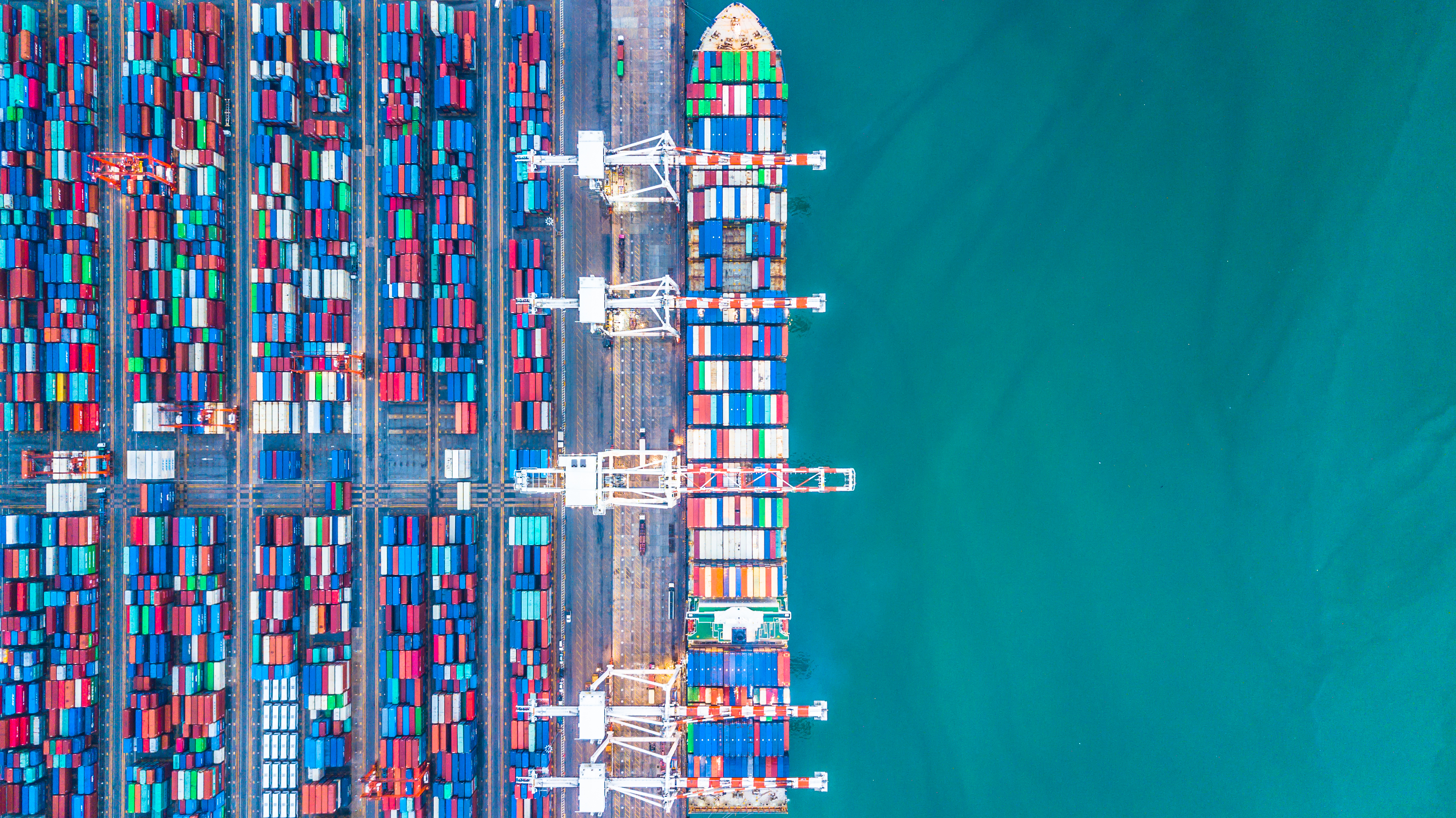
Current trade tensions represent an opportunity to rethink the organisation of container shipping services out of Asia. We have opted to look at the possibility of organising a hybrid shipping service network.
The period of great global instability we are currently going through raises questions about a certain number of formulae and dogmas built into the organisation of trade and intercontinental container shipping services, particularly out of Asia. Challenging the fundamentals which have served for 30 years can cause a shock but for the eternal optimists, of which I am one, it can be an opportunity to try to think outside the box and imagine possible new models, which take account of recent market constraints.
It is important to keep in mind that a good solution is one that lasts, one that is sufficiently robust and profitable for all parties, shipping companies, shippers and forwarders alike.
1/ The current system
Before engaging in a theoretical reconstruction of the existing system which will be sufficiently innovative and disruptive to bring a clear improvement, let us first take a close look at the basic features of the problems we currently face.
The issues facing shipping companies and port operators
- We need to look again at our use of Ultra Large Container Ships (ULCS). Their load factors and regularity are medocre and that reality is unlikely to change over the next five years.
- We have definitively opted for an economy based on the FEU, even on North-South services. Use of the 20' container is becoming less common everywhere and this is bound to have an affect on average ship size.
- The multi-form increase in threats facing the shipping industry means that greater agility is required in areas where ships are operated. At political level, these threats mean that the principle of freedom of navigation for commercial shipping needs to be clearly reaffirmed.
- An improvement in the quality of port terminal operations will require a better organisation of the different activities involved in the land area available.
- Overcapacity is aggravating the effect of market concentration.
- The cost of environmental measures on the tonne per nautical mile ratio is exerting pressure on the market and will not go away. National and international laws should encourage environment-friendly practices without distorting competition.
- Restoration of the image of the shipping sector in public opinion represents another major challenge.
The issues facing importer and exporters
- Each client's transport needs are very different and susceptible to change. It is essential to go further in analysing these needs in a transparent manner so as to take them more into account at sea, at the quayside and in the overland leg of the container transport chain. The floating stock concept is crucial for shippers.
- The great centres of world trade are changing location and the "workshop of the world" title which used to be applied exclusively to China now takes in the wider Indo-Pacific region. Moreover, nearshoring, which involves bringing production centres closer to areas of consumption, is progressing slowly but needs to be taken into account and given long-term support by service providers.
- Technological progress should enable better account to be taken of changes in the flow of containers, whether through capillary or organic development, and allow some tenets of container massification logic to be challenged.
- Shippers have a real need for well regulated shipping services if they are to build efficient supply chains.
The trade war which began in early 2025 has put all parties involved in international trade in a quandary, forcing them to find to take stock and find a new form of coexistence in the global village.
2/ Hybrid services according to ship type
How can we turn today's new constraints into positive forces for the future in the current low growth environment? It seems to us that the creation of hybrid services according to ship type is an avenue worth exploring. This would enable us to escape from an excessively monolithic and now dated approach to the shipping economy. Shipping is currently organised almost exclusively with the objective of achieving economies of scale through the operation of ever bigger ships on east-west motorways out of China and now South East Asia more generally.
Now that the "happy" globalisation of the last 40 years has clearly had its day and that the size of the ultra large container carriers is posing a series of problems, it should be possible to rationalise fleet use for the benefit of all parties, using existing resources.
The orderbooks of the big shipping companies indicate that there has been a certain renewal of interest in the 12,000-16,000 teu post panamax segment of the market, even if they also include some "monsters" in the 18,000-24,000 TEU category.
In a sense, the changes in service schedules caused by the disruption in the Red Sea represent a first experiment in what could turn out to be a complete reconfiguration of the deployment of shipping capacity.
- 24 000 TEU : slow and expensive mass transportation
Overall, the operation of very big ships on the Cape of Good Hope route from Asia to Europe has kept a large part of the market happy. This is one of the lessons learned in 2024. After the initial shock, logistics chains adapted to the new situation in a much more orderly than had been expected. The question of when the grand return to the Suez Canal is likely to take place is going to be posed but it is legitimate in the meantime to consider if it would not be judicious to continue sending the very big ships via the long route. That might seem counter-intuitive initially but we need to bear in mind that there are two very different kinds of client. There are those, mainly forwarders, who focus very much on price and are little concerned about transit times, while there are others who represent less cargo in volume terms but require speedy delivery and regularity. Their DNA is closer to that of the beneficial cargo owners, also known as direct shippers.
To have 24,000 TEU ships leaving Asia on a semi-regular basis, which is to say in a clearly defined and transparent manner, with sailings only taking place when ships are full and, therefore, achieving maximum economy of scale, can be an attractive proposition.
Such a system would limit the impact of incidents in risk zones. In 2021, with the grounding of Ever Given, we saw the proportions that such an incident could take. Having the very big vessels sail far from potential conflict zones would also avoid insurance surcharges.
From an operational point of view, ultra-slow steaming at a speed of 8-10 knots would give an average transit time of 55 days from Shanghai to Rotterdam. For some big importers, a longer sailing time is not a handicap. On the contrary, it provides them with a sort of floating storage system which they do not have to pay for. We should not forget that, in commercial contracts, payment for goods is generally triggered by their "onboard" status. For many international trade operators, therefore, the proof that the goods are onboard is more important than the the time taken to deliver them when it comes to evaluating the execution of a commercial contract.
- 15 000 TEU : regular, fast services
Unlike this model but using the same Shanghai-Rotterdam route to represent the Asia-Europe import market, there would be regularly, weekly direct services, with fixed departure dates, which would transit through the Suez Canal using post-panamax 15,000 TEU ships steaming at 16-18 knots. These ships would offer reliable transit times of less than 30 days. The latest reductions in fuel prices lend further credence to this option, given that they make it possible to steam at one or two knots more, even if this possibility is too uncertain to serve as the basis for a long-term proposition.
The most sensitive goods, which represent a lower cargo volume, would thus benefit from a "premium" service, with a higher price being paid for real quality, based on concrete, verifiable criteria.
Two business approaches
We would thus end up with two very different services, each with its own commercial logic. The market would gain overall in coherence and transparency. Some forwarders would find themselves deprived of the possibility of selling their clients the lower quality services they bought at low cost for a top-dollar price. This system would also enhance the shipping companies' ability to challenge the NVOCCs by selling the real commercial quality they are able to bring to the market.
This approach would overturn the difference in operating cost between the Cape of Good Hope route and the one via the Suez Canal. Six months after the start of the crisis in the Red Sea, the longer route represented an additional cost of about USD1,000 per 40' container. The new hybrid system, with slot costs kept under control thanks to two clearly segmented products, we could find ourselves with the following new structure:

The pros
- Clearer product categories, with the end-client paying for genuinely different services.
- Reflection of real post-Covid operating costs, with a return to fair pricing and better returns for the entity bearing the capital cost of the service.
- Transparent and more intelligent capacity management.
- The possibility for shippers to switch from one type of product to another according to their changing need.
The cons
- If this system was adhered to by all operators, it would format the market, which could pose problems with the regulatory authorities.
- The system would clearly be of little interest to some forwarders, bearing in mind that forwarders represented around 50% of total demand for shipping company services.
The advantages of a market configuration of this sort would probably make sense during the current period of market uncertainty and low growth. In 10 years, however, it is possible that the qualities of the 24,000 TEU ships will have become much more pertinent on markets with a better balance between supply and demand.
Although, in the current period, more credit is given to the hypothesis of a forced slowdown in growth rather than a chosen one, the hybrid approach could also serve as a shock absorber for a future market crash, which would be more than likely in the event that there was a large-scale return to the Suez Canal.

Jérôme de Ricqlès
Shipping expert
Our latest articles
-
Subscriber 2 min 19/12/2025Lire l'article -
Container shipping in 2025
Lire l'article -
Air cargo: the rerouting of flows is confirmed
Lire l'article


